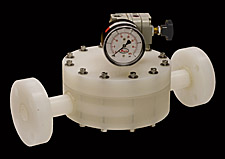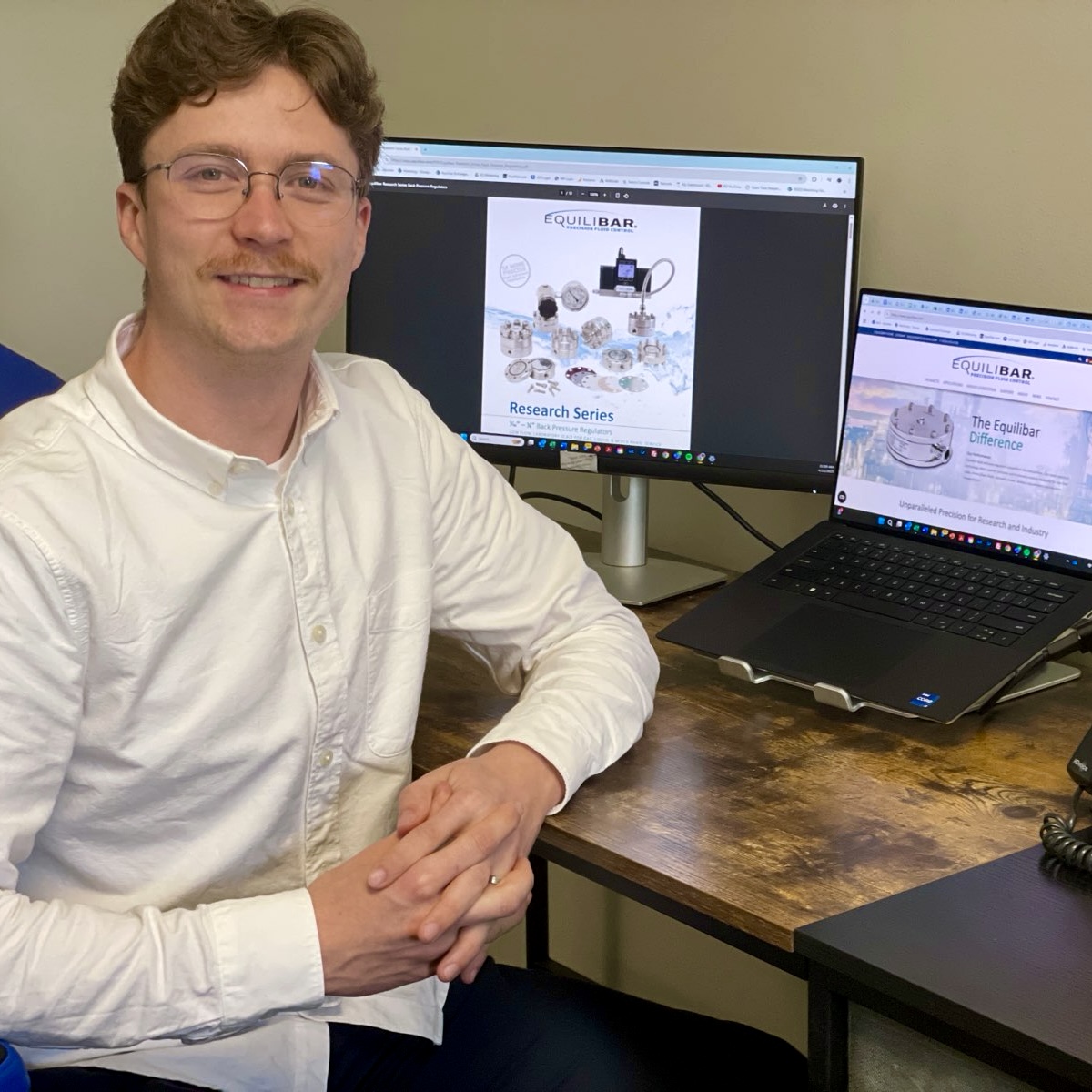Kynar PVDF Joins the Many Pressure Regulator Material Options
Equilibar back pressure regulators work differently than traditional regulators. A flexible membrane is the only moving part. This frictionless design provides high resolution, high accuracy, a wide controllable flow range, and the ability to select from a wide choice of wetted materials. The same performance advantages that were only available in stainless steel alloys is now available in a PVDF (Kynar) back pressure regulator. Manual and electronic control options are available.
Exotic Materials for Wetted Parts in Pressure Regulators
Back pressure regulators that are manufactured from exotic materials or plastics that are compatible with aggressive chemistries often trade their performance in exchange for this compatibility. The accuracy and resolution of the controlled pressure can be adversely affected by the small sensing piston areas and unusual seal designs required by these chemically resistant alloys. The Equilibar back pressure regulator works differently than traditional regulator designs and overcomes these performance challenges. A flexible diaphragm is the only moving part. This diaphragm features a larger area than competitive designs which makes it more responsive to small changes in the system pressure. The diaphragm acts to directly seal against the valve seat which eliminates the need for the friction causing dynamic seals used in competitive regulator designs.
Equilibar now offers this frictionless design in an all PVDF (Kynar) and PTFE (Teflon) wetted parts model. The body is precision CNC machined from Kynar bar stock while the diaphragm is manufactured from a glass matrix reinforced PTFE material. Port sizes from 1/2 inch up to 2 inch (DN) are able to cover applications that require holding low flow rates precisely through high flow applications that require large Cv’s. Port connections are available in standard ANSI/ASME flanges. The body may also be custom machined to incorporate your specific thread or fitting type including ferrule or compression fittings.
This regulator was originally designed to improve the metering of small liquid doses into larger batches. One example of this is to provide improved control over metering sodium hypochlorite in a water treatment facility. The Equilibar back pressure regulator is used to isolate the sodium hypochlorite pump outlet pressure from the constantly changing pressure in the water mains. By holding the pump outlet at a fixed and repeatable pressure the dose delivered by the pump remains consistent despite the changes in the downstream water system. The corrosive nature of the NaOCl prevented the use of traditional stainless steel back pressure valves. Equilibar manufactures several back pressure regulators that feature 100% non-metallic construction for any application that cannot have any wetted metal parts.
How does the Kynar / PVDF Pressure Regulator Work ?
The Equilibar is pilot operated and is controlled by applying an air pilot signal to the dome port. The Equilibar controls the media pressure on its inlet port in a precise 1 to 1 relationship to this pilot pressure. The Equilibar reacts quickly with a response time measured in milliseconds. This air pilot pressure may be provided by a simple mechanical knob adjusted regulator or it can be provided by a small electronic air pressure regulator. The electronic regulator offers the choice of 4-20mA or 0-10VDC analog input signals or RS232/485 and Ethernet IP serial digital input signals.



